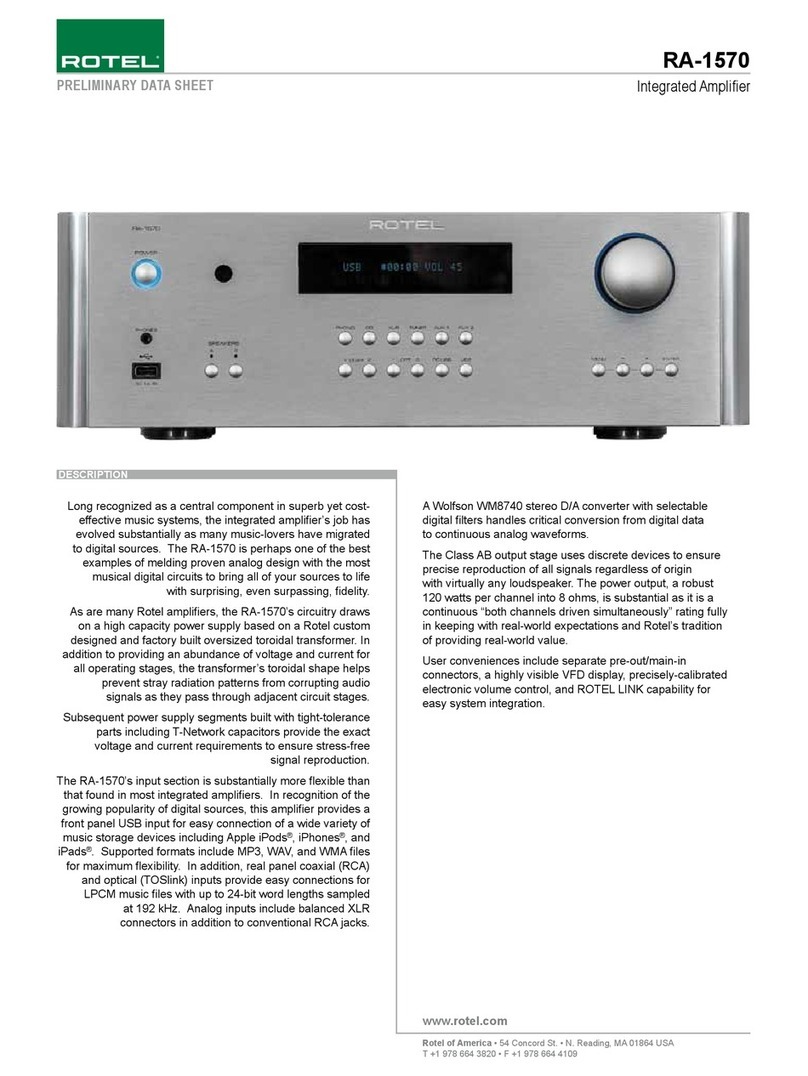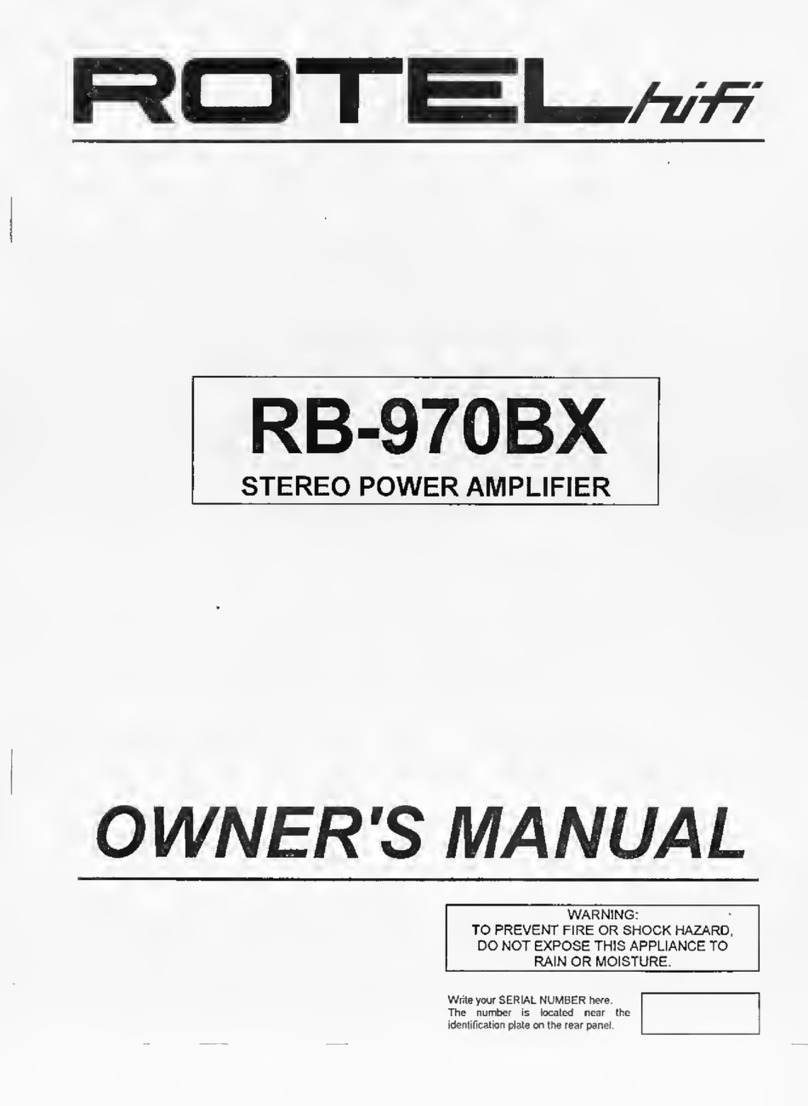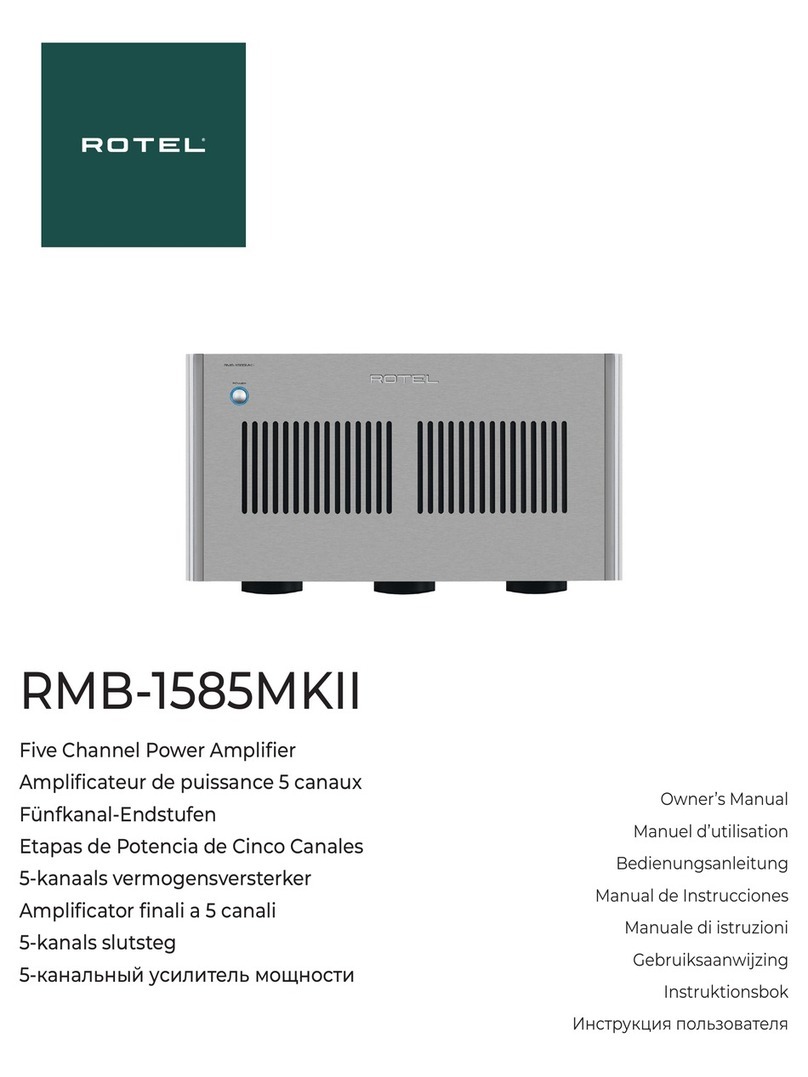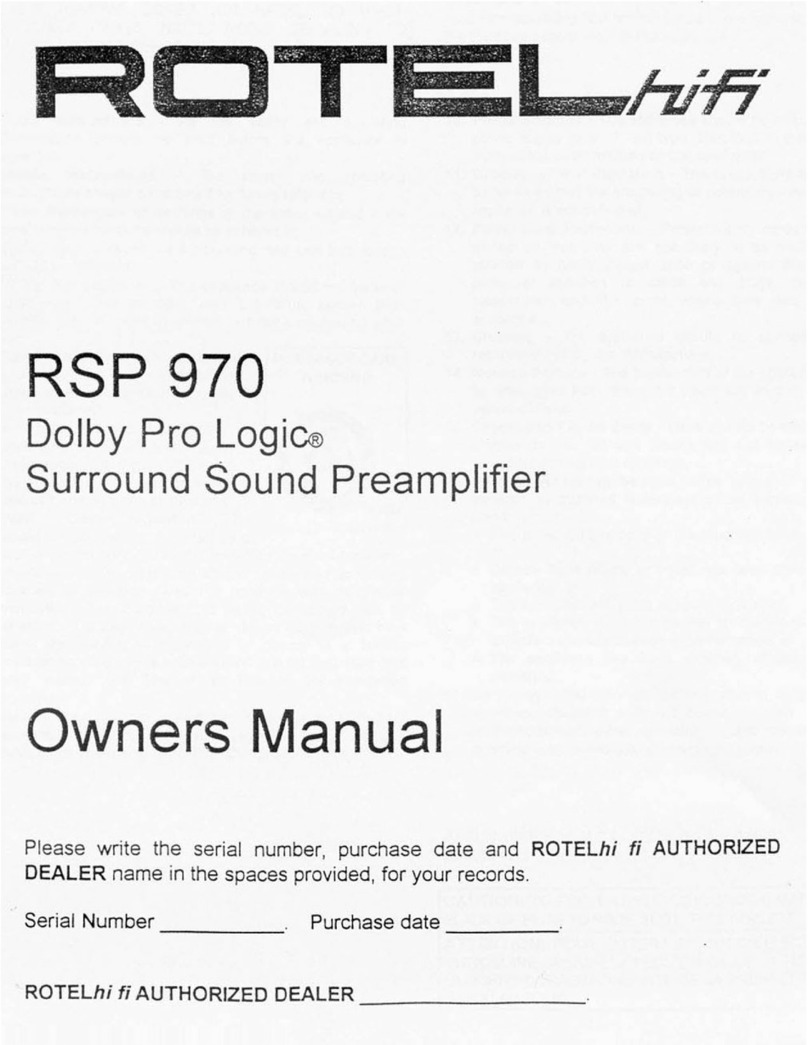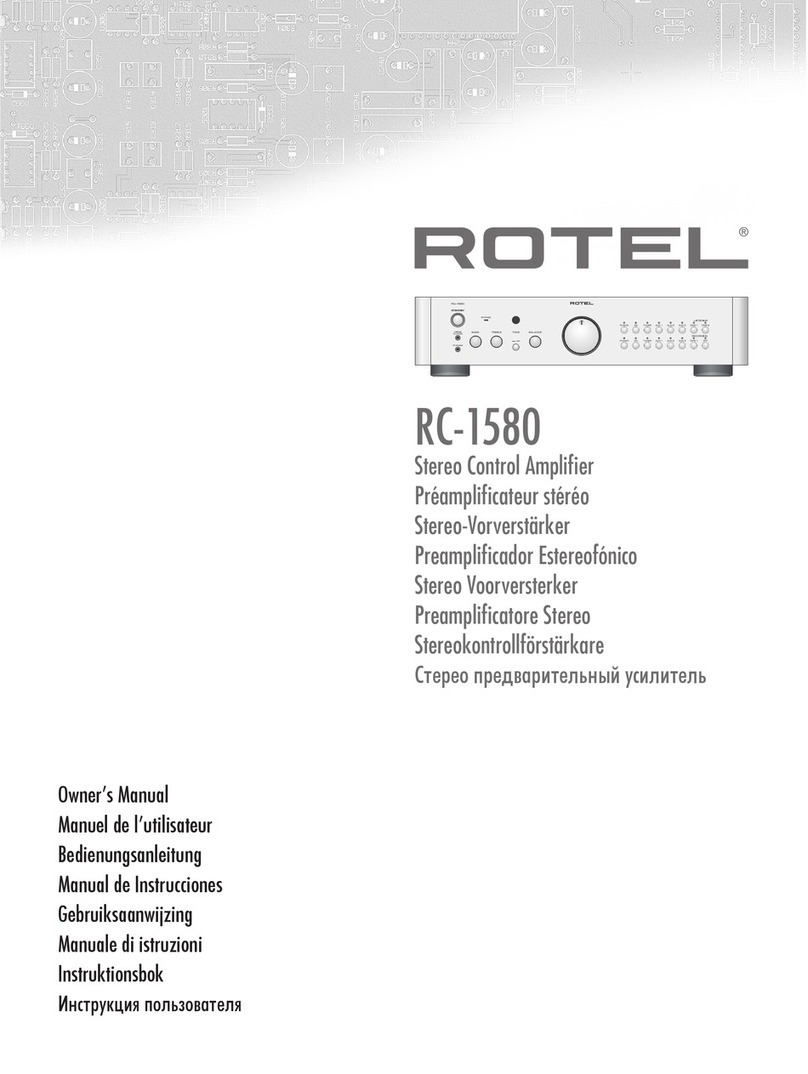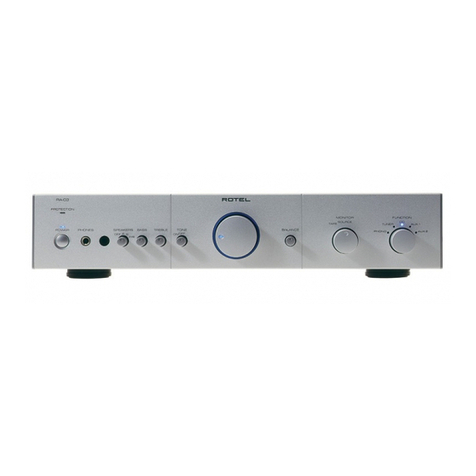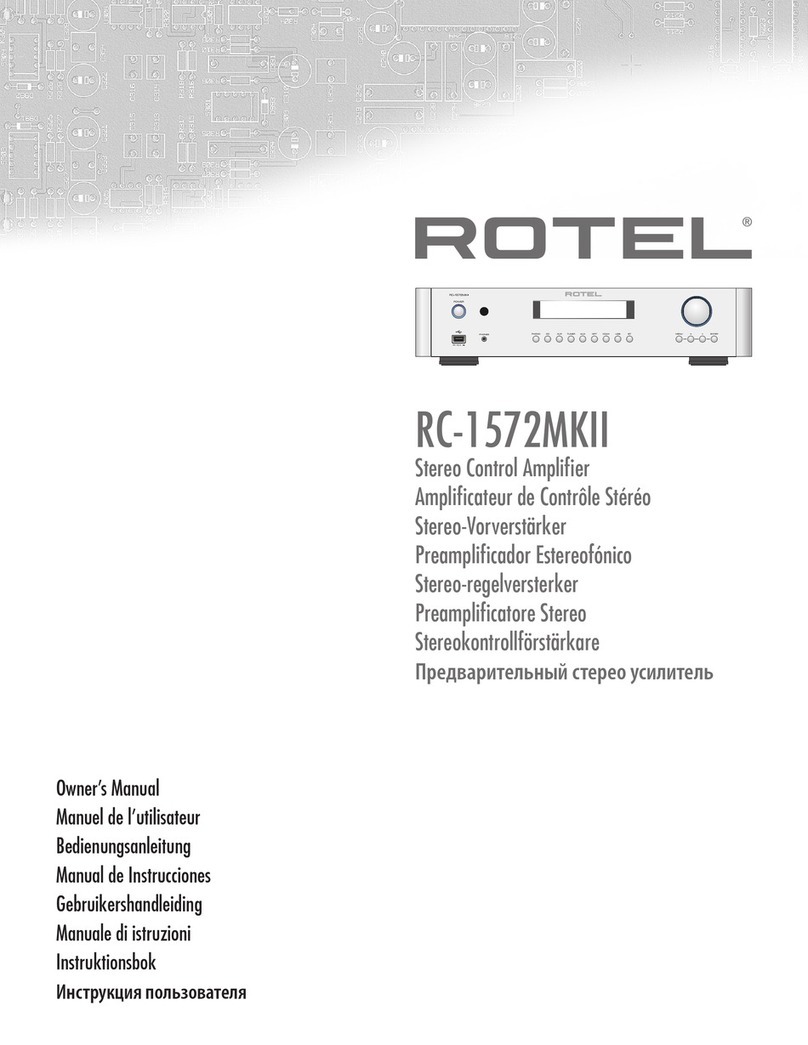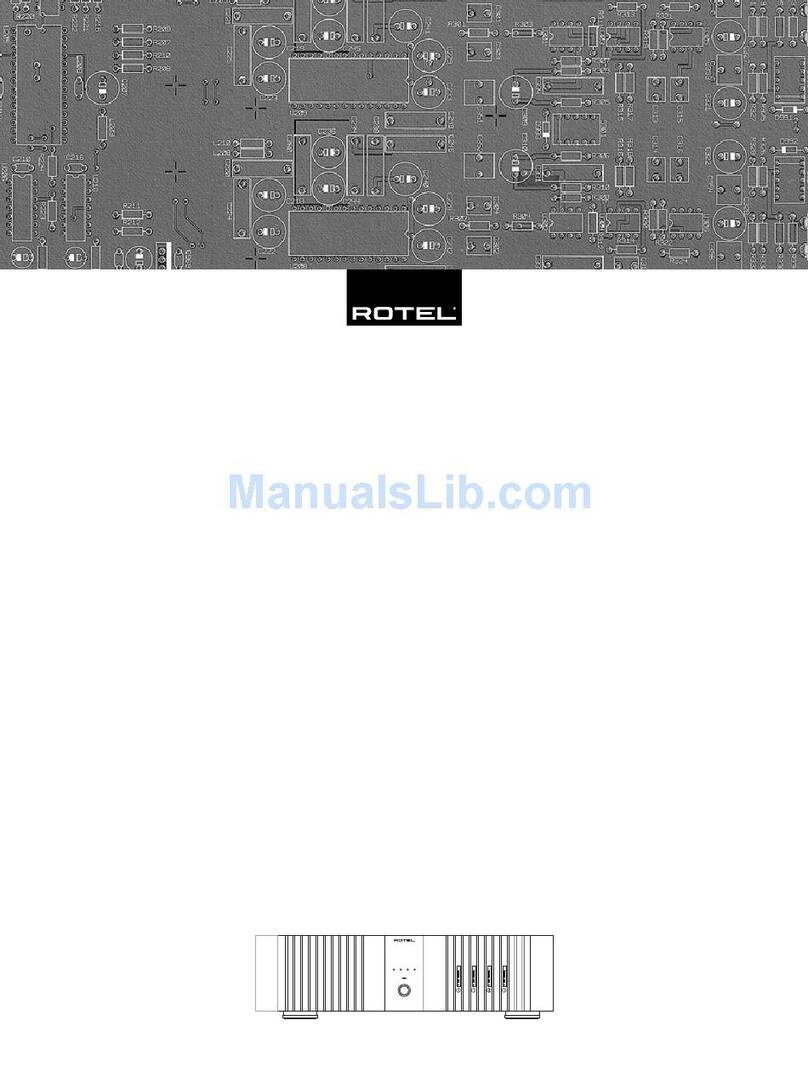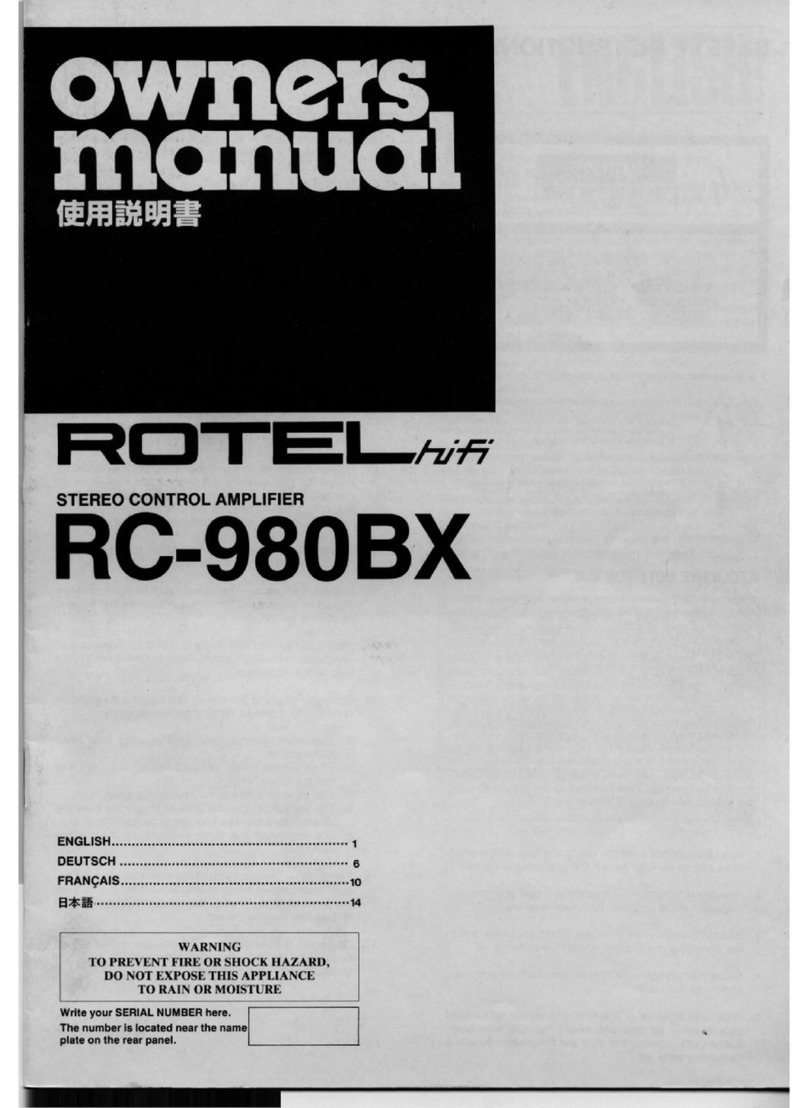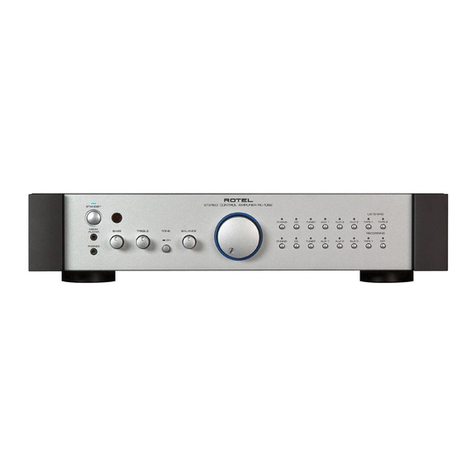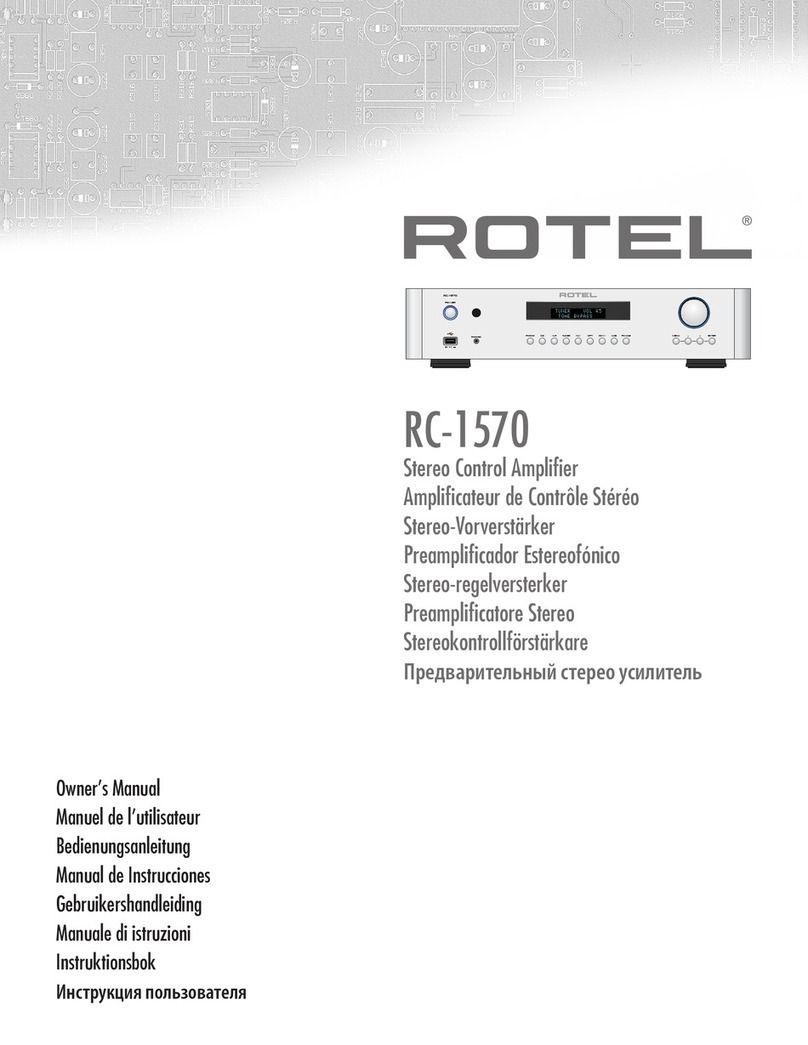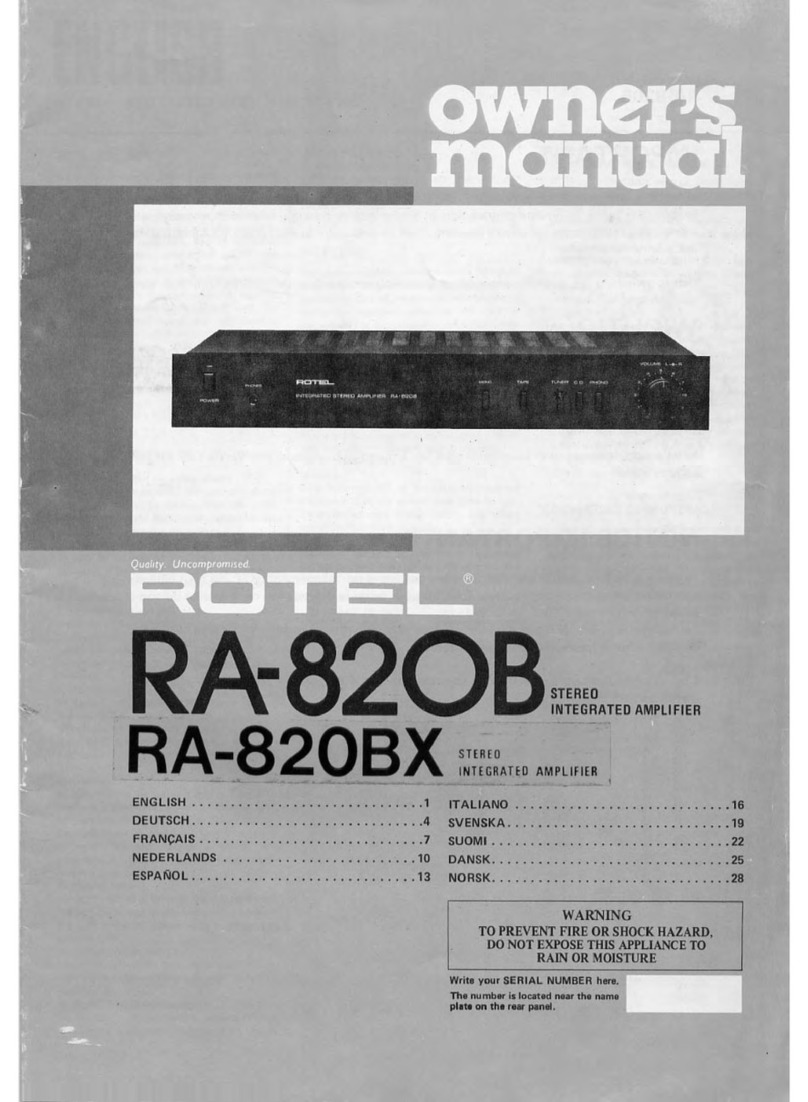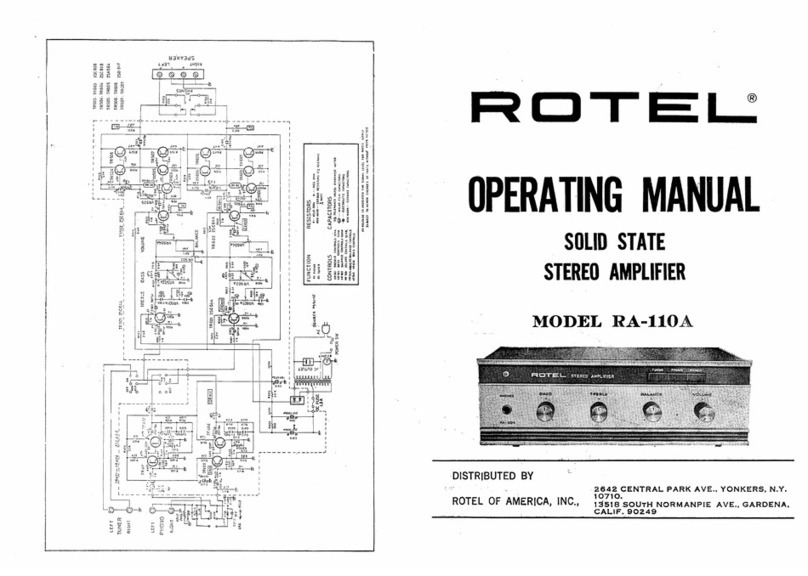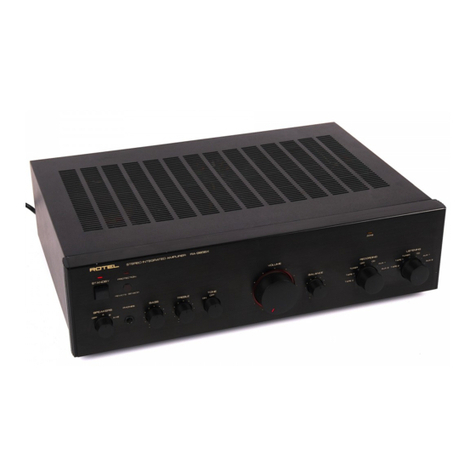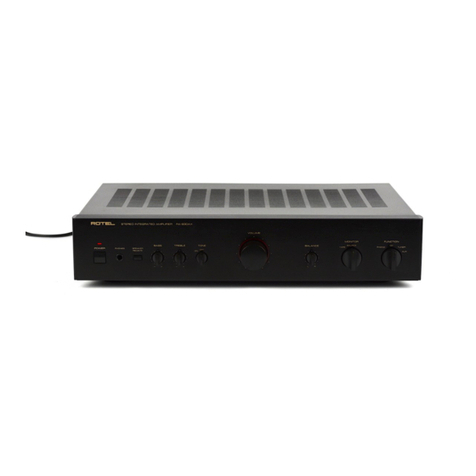
10 RMB-1504 Ampli cateur de Puissance 4 Canaux
Tous les appareils Rotel sont conçus en totale
conformité avec les directives internationales
concernant les restrictions d’utilisation de substances
dangereuses (RoHS) pour l’environnement, dans
les équipements électriques et électroniques, ainsi
que pour le recyclage des matériaux utilisés (WEEE,
pour Waste Electrical and Electronic Equipment). Le
symbole du conteneur à ordures barré par une croix
indique la compatibilité avec ces directives, et le fait
que les appareils peuvent être correctement recyclés
ou traités dans le respect total de ces normes.
Remarques importantes concernant la sécurité
L’éclair dans un triangle équilatéral indique
la présence interne de tensions électriques
élevées susceptibles de présenter des
risques graves d’électrocution.
Le point d’exclamation dans un triangle
équilatéral indique à l’utilisateur la
présence de conseils et d’informations
importantes dans le manuel d’utilisation
accompagnant l’appareil. Leur lecture est
impérative.
ATTENTION : Il n’ya àl’intérieur aucune piècesusceptible d’êtremodifiée
par l’utilisateur. Adressez-vous impérativement à une personne qualifiée.
ATTENTION : Pour réduire tout risque d’électrisation ou d’incendie, ne
pas exposer l’appareil à une source humide, ou à tout type de risque
d’éclaboussure ou de renversement de liquide. Ne pas poser dessus
d’objet contenant un liquide, comme un verre, un vase, etc. Prenez
garde à ce qu’aucun objet ou liquide ne tombe à l’intérieur de l’appareil
par ses orifices de ventilation. Si l’appareil est exposé à l’humidité ou
si un objet tombe à l’intérieur, débranchez-le immédiatement de son
alimentation secteur, et adressez-vous immédiatement et uniquement
à une personne qualifiée et agréée.
Tous les conseils de sécurité et d’installation doivent être lus.
Conservez soigneusement ce livret.
Tous les conseils de sécurité doivent être soigneusement respectés.
Respectez les procédures d’installation et de fonctionnement indiquées
dans ce manuel.
Ne pas utiliser cet appareil près d’un point d’eau.
L’appareil doit être nettoyé uniquement avec un chiffon sec ou un
aspirateur.
Il ne doit pas être posé sur un fauteuil, un canapé, une couverture ou
toute autre surface susceptible de boucher ses ouïes d’aération ; ou
placé dans un meuble empêchant la bonne circulation d’air autour des
orifices d’aération.
Cet appareil doit être placé loin de toute source de chaleur, tels que
radiateurs, chaudières, bouches de chaleur ou d’autres appareils
produisant de la chaleur.
Notamment, ne pas tenter de supprimer la prise de terre (troisième
broche de la prise) si celle-ci est présente. Si la prise n’est pas conforme
à celles utilisées dans votre installation électrique, consultez un électricien
agréé. Prendre garde à ce que ce cordon d’alimentation ne soit pas pincé,
écrasé ou détérioré sur tout son trajet, et à ce qu’il ne soit pas mis en
contact avec une source de chaleur. Vérifiez soigneusement la bonne
qualité des contacts, à l’arrière de l’appareil comme dans la prise murale.
N’utilisez que des accessoires préconisés par le constructeur.
N’utilisez que des meubles, supports, systèmes
de transport suffisamment solide pour supporter
l’appareil. Procédez toujours avec la plus extrême
précaution lorsque vous déplacez l’appareil, afin
d’éviter tout risque de blessure ou des dommages
à l’appareil.
Débranchez le câble d’alimentation en cas d’orage, ou si l’appareil ne
doit pas être utilisé pendant une longue période.
L’appareil doit être immédiatement éteint, débranché puis retourné au
service après-vente agréé dans les cas suivants : le câble d’alimentation
secteur ou sa prise est endommagé; un objet est tombé, ou du liquide
a coulé à l’intérieur de l’appareil; l’appareil a été exposé à la pluie;
l’appareil ne fonctionne manifestement pas normalement; l’appareil est
tombé, ou le coffret est endommagé.
L’appareil doit être utilisé sous un climat non tropical.
La ventilation ne doit pas être entravée en recouvrant les orifices de
ventilation d’objets tels que des journaux, des nappes, des rideaux, etc.
Aucune source de flamme nue, telle que des bougies allumées, ne doit
être placée sur l’appareil.
Vous devez réserver un espace libre d’une dizaine de
centimètres minimum autour de l’appareil.
ATTENTION : La prise d’alimentation située à l’arrière constitue le
principal moyen pour déconnecter l’appareil du secteur. Cet équipement
doit être positionné dans un espace ouvert qui permet de garder l‘accès
au câble d’alimentation.
Cet appareil doit être branché sur une prise d’alimentation secteur, d’une
tension et d’un type conformes à ceux qui sont indiqués sur la face arrière
de l’appareil (USA : 120 V/60 Hz, CE : 230 V/50 Hz).
Brancher l’appareil uniquement grâce au cordon secteur fourni, ou à
un modèle équivalent. Ne pas tenter de modifier ou changer la prise.
Ne pas utiliser de cordon rallonge.
La prise d’alimentation secteur constitue le moyen radical de déconnexion
de l’appareil. Elle doit donc rester en permanence accessible, car sa
déconnexion constitue la seule assurance que l’appareil n’est plus
alimenté par le secteur.
Utilisez uniquement descâbles de Classe 2pour réalise les connexionsaux
enceintes acoustiques et offrant une isolation suffisante pour minimiser
les risques de chocs électriques.
Ce symbole signifie que cet appareil bénéficie d’une
double isolation électrique. Sa prise d’alimentation
n’a pas besoin d’être reliée à la terre ou à une
masse particulière.
